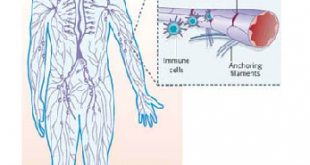CELL
A cell is the structural and functional unit of life. It is the basic unit of life. Cell was discovered by Robert Hooke (1653) in cork, as honeycomb structure. A human being is made up of infinite number of cells that does various functions in the body.
Cell Theory was given by Schleiden and Schwann in 1839 as:
- All living organisms are made up of cells.
- All cells arise from pre-existing cells.
Rudolf Virchow gave a latin slogan Omnis cellula-e-cellula for the new cells that arise from the pre-existing cells.
TYPES OF CELLS
Basing upon the origin, number of cell organelles, and type of nucleus a cell can be prokaryotic and eukaryotic. A prokaryotic cell is a primitive cell, which lacks a well developed nucleus (such nucleus is known as nucleiod), absence of most of the cell organelles except ribosomes, absence of double membranous cell organelles. E.g. a bacteria, all the members of the Kingdom-Monera have prokaryotic cell organization.
However, a eukaryotic cell has a well developed nucleus (it has double membranous nuclear membrane, peculiar nucleolus, jelly-like nucleoplasm, chromosomes, genes), double membranous cell organelles except lysosomes and vacuoles, presence of every cell organelle that are usually present in animal cell. E.g. plant cell, animal cell etc.
TYPES OF ORGANISMS
Basing upon the number of cells, an organism can be unicellular or multi cellular. In unicellular organisms, like Amoeba, Paramecium a single cell performs all the basic functions which are required for its living. However, in multi cellular organisms there are innumerable cells present. A group of cells similar in structure and function assemble together to form tissue. Tissue aggregate together to form an organ. Organ aggregate to form an organ system and organ system forms an organism. Multi cellular organisms have different tissues for carrying out different life processes thus, division of labor is present only in multi cellular organisms. E.g. of multi cellular organisms is plants, human beings, animals etc.
PLANT CELL AND ANIMAL CELL
Plant and animal cell both are multi cellular and eukaryotic in nature, beside this there are differences between both. In plant cell, chloroplasts (type of plastid) are present which contain chlorophyll along with other pigments which helps them in carrying out photosynthesis. Animal cells lack in possessing chloroplasts. In plant cells, cell wall is an additional boundary present outside to the plasma membrane; animal cell contains outer membrane as the plasma membrane. Animal cell contains centrosome, plant cell lacks it. Plant cell vacuoles are larger in size and smaller in number, but animal cell vacuoles are smaller in size and larger in number.


Useful Questions for Competitive Exams:
Q.1. Who gave cell theory?
- Robert Hooke
- Schleiden and Schwann
- Leeuwenhock
- Rudolf Virchow
Ans. b
Q.2. Who discovered the cell?
- Louis Pasteur
- Leeuwenhock
- Robert Hooke
- Robert Brown
Ans. c
Q.3. Rudolf Virchow gave:
- Omnis cellula-e-cellula
- Cell theory
- Organism consists of many cells
- Structure of cell.
Ans. a
Q.4.Prokaryotic cell possess:
- Mitochondria
- Nucleoid
- Nucleus
- Centrosome
Ans. b
Q.5. Example of prokaryotic cell is:
- a plant cell
- an animal cell
- a bacteria
- lichen
Ans. c
Q.6. Example of multi cellular organism is:
- a plant cell
- a bacterium
- yeast
- Amoeba
Ans. a
Q.7. Select the cell organelle present in animal cell:
- Chloroplast
- Chromoplast
- Centrosome
- Leucoplast
Ans. c
Q.8. Plant cell has:
- No vacuoles
- Bigger size vacuoles and smaller in number
- Small size vacuoles and larger in number
- Infinite number of vacuoles
Q.9. Select the odd one out:
- Plant cell
- Amoeba
- Euglena
- Paramecium
Ans a
Q.10. Outermost boundary in animal cell is:
- Cellulosic
- Plasma membrane
- Cell wall
- Absent
Ans. b
 IT2EDU Empowering Education Through Technology
IT2EDU Empowering Education Through Technology

